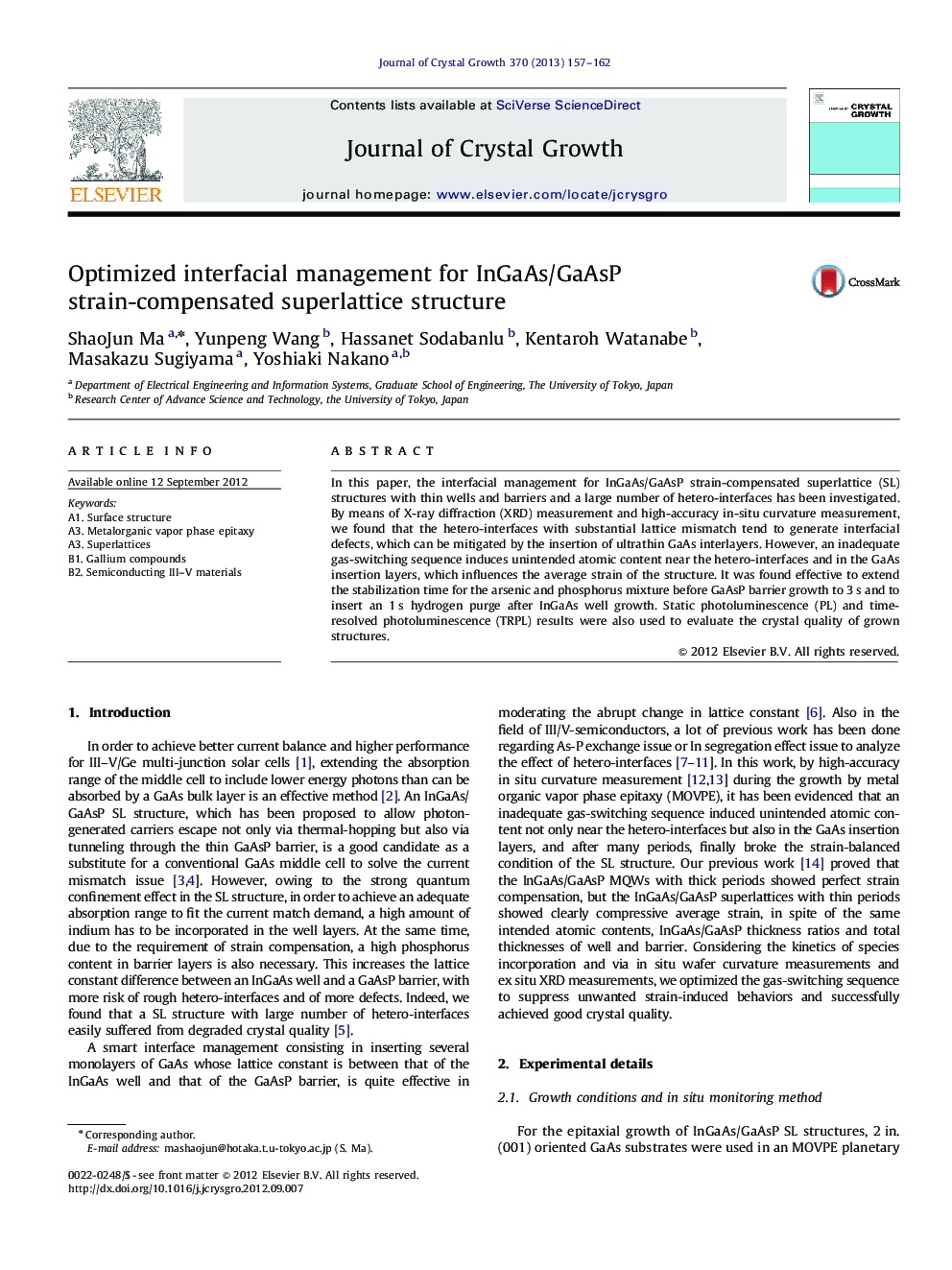| Article ID | Journal | Published Year | Pages | File Type |
|---|---|---|---|---|
| 1791091 | Journal of Crystal Growth | 2013 | 6 Pages |
In this paper, the interfacial management for InGaAs/GaAsP strain-compensated superlattice (SL) structures with thin wells and barriers and a large number of hetero-interfaces has been investigated. By means of X-ray diffraction (XRD) measurement and high-accuracy in-situ curvature measurement, we found that the hetero-interfaces with substantial lattice mismatch tend to generate interfacial defects, which can be mitigated by the insertion of ultrathin GaAs interlayers. However, an inadequate gas-switching sequence induces unintended atomic content near the hetero-interfaces and in the GaAs insertion layers, which influences the average strain of the structure. It was found effective to extend the stabilization time for the arsenic and phosphorus mixture before GaAsP barrier growth to 3 s and to insert an 1 s hydrogen purge after InGaAs well growth. Static photoluminescence (PL) and time-resolved photoluminescence (TRPL) results were also used to evaluate the crystal quality of grown structures.
► The interfacial management for the InGaAs/GaAsP SLs has been investigated. ► Ultrathin GaAs interlayers are effective to mitigate interfacial defects. ► Proper gas-switching sequence could avoid unwanted atomic content in structure. ► Wafer’s curvature, XRD, PL and TRPL are utilized to evaluate the grown samples.
